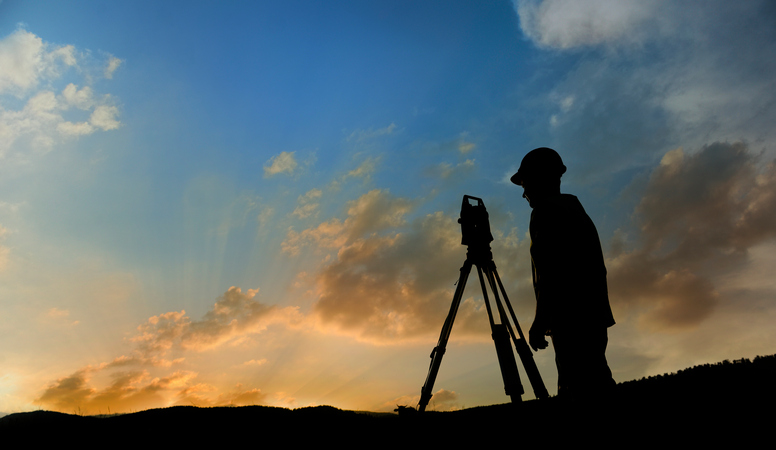The site you choose can make or break your project’s success. Learn how to find the right development site.
What makes a profitable development site?
This is a question that successful developers have no trouble answering. It is why they are successful, to begin with. And if you want to become one, you should have an eye for sites with development potential.
Of course, you can’t develop this skill overnight. This is why you should start by building a system that allows you to find profitable opportunities.
The issue is, this might prove more challenging than it seems at first. There’s a lot that goes into a suitable site, so doing thorough research is paramount. If you’re diligent, you can find a site that checks all the right boxes and instantly boost your chances of success.
But how do you do it?
If you’re not sure where to start, this article will give you actionable tips worth following. So, let’s dive into them.
Tip #1. Understand How Zoning Works
You can find a site in a perfect location that has massive development potential. But if it’s not in a suitable zone, you might want to hold off.
The most common zones are residential, commercial, and industrial. Before choosing a site, you must identify first what you intend to do with it. Your development needs to meet the land’s intended use before you can build. Otherwise, you’ll either have to rezone the land or find another site.
Local governments often have their own way of regulating the zones. The rezoning process can also vary greatly, so it pays to pay a visit to your local council before you apply.
In some cases, rezoning the land can work out, but it might not make sense in all situations. The costs might outweigh the benefits, including opportunity costs if it takes too long, so you might be better off finding another site.
So, familiarise yourself with the zoning in the area where you want to build. In this way, you’ll know if the project is feasible at your desired location. Understand the possibilities and limitations of each zone so you can see if they match your project’s specifics.
Tip #2. Pay Attention to the Infrastructure
Every developer knows the importance of choosing the right location. But what does this really mean?
It’s not just about the proximity to the city centre or the size of the lot. You need to dive much deeper into the site’s infrastructure to make sure that it’s favourable to buyers or tenants.
This can mean many different things, depending on the type of project. If you’re building a residential complex, who will be the target market? If it’s for families, you need to make sure that there are schools and public transport available nearby. If you’re building a commercial property, you need to look at the businesses in the area to find suitable tenants.
Aside from what the site should have, you also need to identify the ones to avoid. For instance, neighbouring loud businesses and dog breeding kennels can be off-putting to tenants.
It would be best if you can visit the location to take a closer look at its surrounding area. Doing so will give you a better feel of how appealing the development is to buyers and tenants.
Tip #3. Assess the Risks
Another crucial consideration when finding sites with development potential is future risks. More specifically, you need to look into the fire and flood risks.
The reason for this is straightforward enough: building in high-risk areas may seriously impact your profitability in several ways.
For a start, it may cost more to build. The application process might take much longer and be more complex. And this can rob you of profits from the get-go.
Worse, potential buyers and tenants are likely to do their own assessment and find any serious risks associated with your development. And if they see that the risk is high, you may not be able to sell or rent, at least not at the projected price.
All of this can result in a failed project. This is why you need to pay close attention to the area’s history and ensure that there aren’t any risks involved.
Tip #4. Be Wary of Encumbrances
Encumbrances are often a serious threat to a project’s feasibility. These include power poles, trees, easements, and many other impediments. If you don’t uncover them on time, you’re likely to face unpleasant surprises while the project is underway.
Certain encumbrances might cause your development to fall out of compliance. Others may require you to pause the development, costing you a lot of time and money.
To avoid this, find a site free of such encumbrances. Alternatively, find a way to overcome them before making any commitments. With that out of the way, you can confidently break ground and start developing.

Tip #5. Visit Auctions
Auctions can be a great place to look for profitable sites. With that said, they’re different from other channels that you may go through. For this reason, you need to prepare yourself for the specifics of auctioning.
First of all, bear in mind that auctions tend to move very quickly. As such, do your research before you make any commitments and know what you’re looking for. More importantly, figure out how much you’re willing to pay. It’s easy to get pressured into blowing your budget if you find a site that meets your needs.
Generally speaking, buying through an auction should save you money, as you’re not working with an agent. Just don’t let yourself get into a bidding war and overspend.
Once you’ve defined your budget, it’s a good idea to place an early bid. You can contact the auction house to do so. If you do, make sure to leave some room in case someone outbids you. Define your budget, stick to it, and only commit when you’re 100% sure that the site suits your project goals.
Tip #6. Leverage Modern Technology
When looking for a site with high development potential, it pays to assemble a capable team. This is a crucial decision as you need to know that you have all the right information.
But you should also look beyond people and take full advantage of new technological solutions. Some software platforms allow you to find sites that meet all the criteria a lot quicker and at lower costs.
Plus, different portals will also help you gather all the information you need to understand the site. Many local governments have digitised their services and you should definitely get familiar with them. This can save you many trips to the local council, which can greatly speed up the process.
Choose Wisely
After getting this far, it’s easy to see why looking for a site with development potential can be very involved. There are many factors that you should think about before making any final decisions. What you see here are only some of the highlights, and you’ll need a lot of information to determine if the site is adequate.
It’s of the utmost importance that you don’t rush the research process. Building on a site that you don’t know everything about is a sure-fire way to encounter obstacles along the way. Take your time, gather the right data, and only buy once you’re fully confident in your decision.
As mentioned, modern technology can be your best friend here. And Archistar is a perfect example. It can help you find profitable development sites in an instant because the Archistar platform has filters that helps you narrow down your search. That means you can filter your search by permitted use, empty lots, zone, lot size, max building height and much more.
Archistar even has an option to highlight sites with development potential, allowing you to instantly view the number of sites that match your criteria. This lets you deep dive into the remaining sites using detailed planning and market and development insights to find profitable development sites.
Get started for free: [https://test.archistar.ai/]

